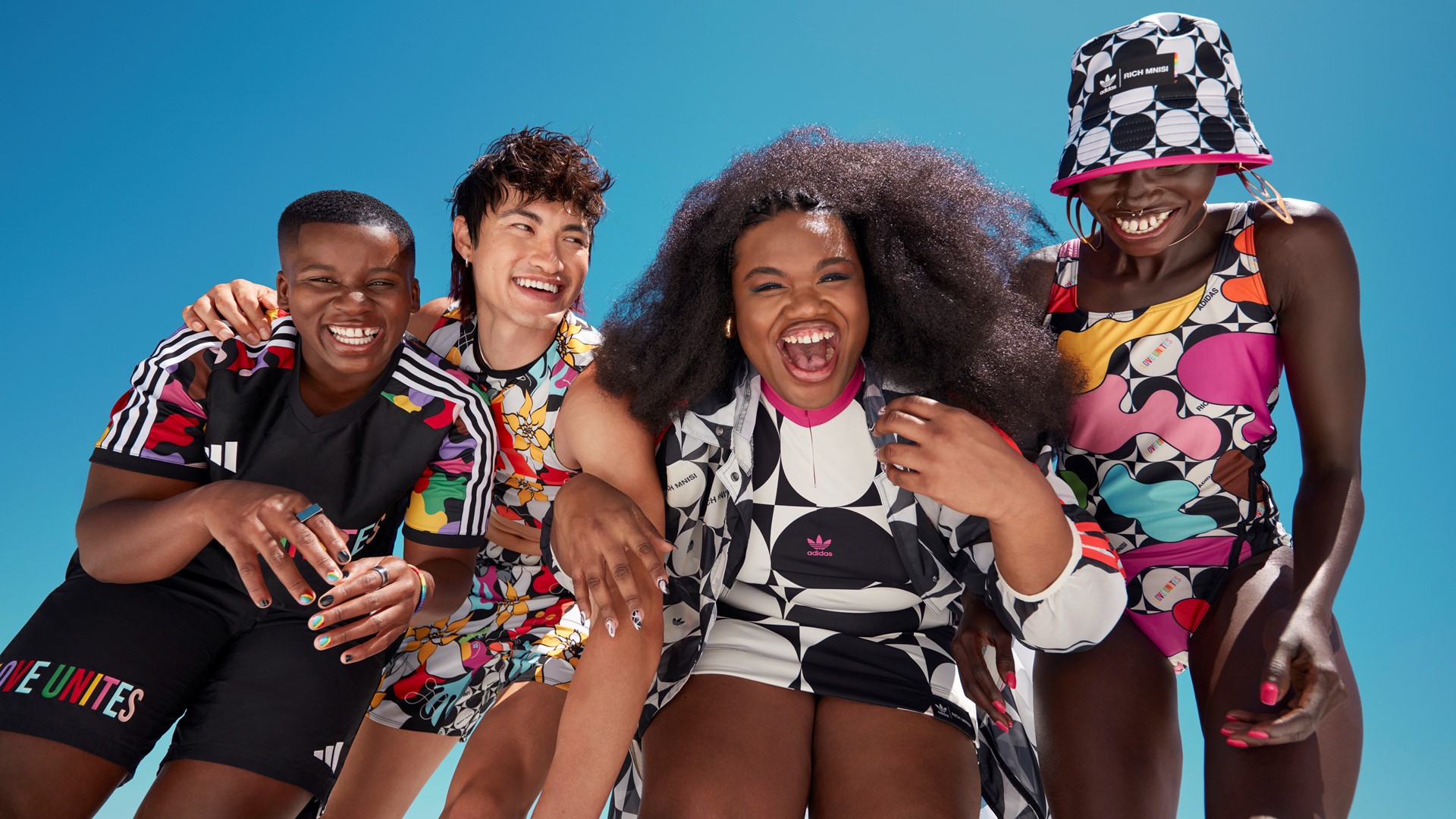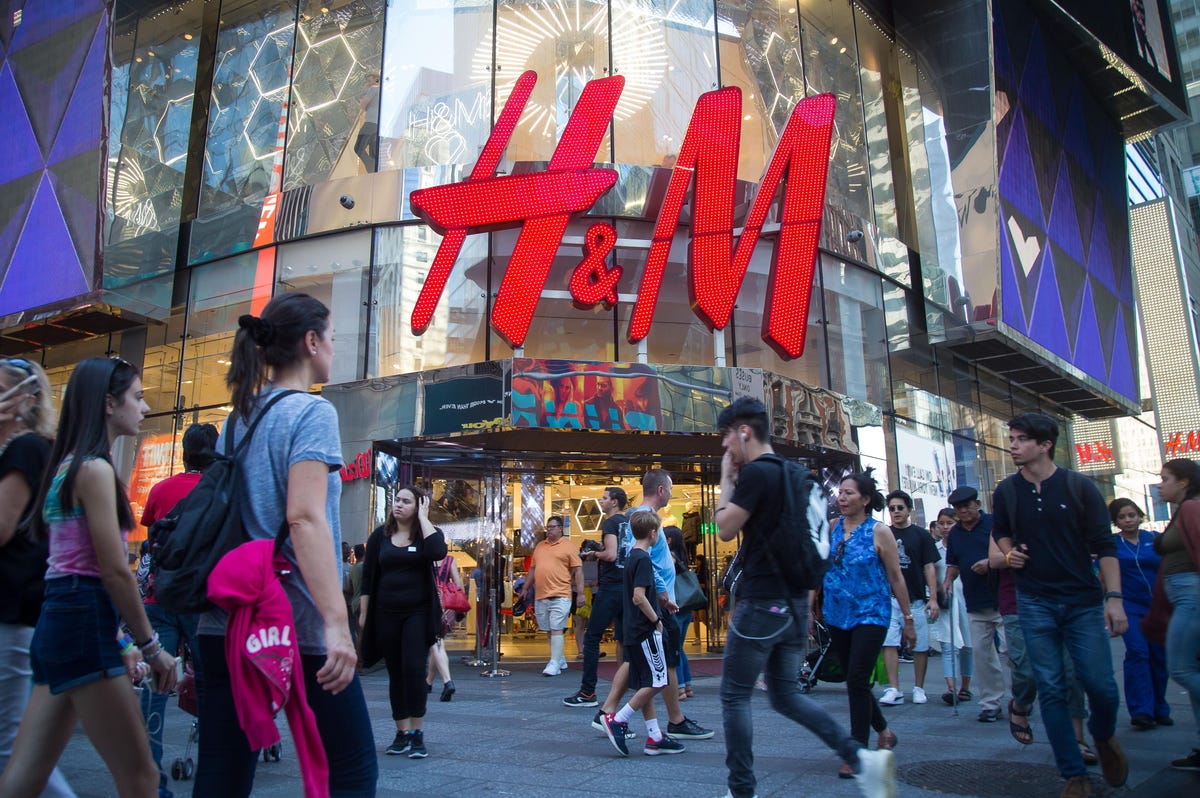Fashion
Adidas Unveils “Let Love Be Your Legacy” Collection in Collaboration with Rich Mnisi for Pride 2023

Adidas, the renowned sportswear and lifestyle brand, has announced a groundbreaking collaboration with celebrated South African designer Rich Mnisi for their highly anticipated “Pride 2023” collection. Titled “Let Love Be Your Legacy,” the collection is a vibrant celebration of inclusivity, diversity, and love, marking a significant milestone in the brand’s commitment to the LGBTQ+ community.
As Pride Month approaches, Adidas has taken a bold step in partnering with Rich Mnisi, a visionary designer known for his innovative and forward-thinking creations. The collaboration aims to amplify the voices and experiences of the LGBTQ+ community while promoting a message of unity and acceptance.
The “Let Love Be Your Legacy” collection showcases a wide range of apparel and footwear inspired by the colors, symbolism, and spirit of Pride. Drawing on Mnisi’s distinctive design aesthetic and Adidas’s renowned craftsmanship, the collection features bold prints, vibrant hues, and empowering messages that celebrate self-expression and the power of love.
Adidas and Rich Mnisi have worked closely to ensure that the collection represents the voices and experiences of the LGBTQ+ community authentically. The designs pay homage to the history of the Pride movement while reflecting the progress and continued fight for equality. Each piece tells a story of love, resilience, and the power of being true to oneself.
In a statement, Rich Mnisi expressed his excitement about the collaboration, stating, “I am thrilled to partner with Adidas to create a collection that represents the vibrant and diverse spirit of the LGBTQ+ community. Through fashion, we have the opportunity to celebrate love and create a positive impact. ‘Let Love Be Your Legacy’ is a testament to the beauty of inclusivity and the strength of unity.”
Adidas has long been a supporter of the LGBTQ+ community, advocating for equality and fostering a culture of acceptance. The collaboration with Rich Mnisi further solidifies the brand’s commitment to promoting diversity and inclusivity both within the company and the wider world.
The “Let Love Be Your Legacy” collection will be available for purchase through select Adidas stores and online platforms, coinciding with Pride Month celebrations in June. A portion of the proceeds from the collection will be donated to LGBTQ+ advocacy organizations, supporting their important work in promoting equal rights and fostering inclusivity.
The collaboration between Adidas and Rich Mnisi serves as a powerful example of how fashion can be a catalyst for positive change. By embracing the values of diversity, love, and acceptance, they encourage individuals to express themselves authentically and celebrate their unique identities.
As the “Let Love Be Your Legacy” collection hits the shelves, Adidas and Rich Mnisi invite individuals from all walks of life to join the celebration of Pride and stand together in solidarity with the LGBTQ+ community. Through fashion, they hope to inspire conversations, challenge stereotypes, and ultimately create a more inclusive and accepting society.
The collaboration between Adidas and Rich Mnisi for the “Let Love Be Your Legacy” collection is a testament to the transformative power of fashion and the importance of amplifying diverse voices. It symbolizes a shared commitment to equality, love, and unity, inviting individuals worldwide to embrace their true selves and make a positive impact in their communities.
As Pride Month approaches, the “Let Love Be Your Legacy” collection serves as a reminder that love knows no boundaries and that acceptance and inclusivity should be celebrated every day of the year.

Business
Fashion giant H&M pulls ad after claims it sexualised underage girls

Swedish brand apologises after advertisement campaign in Australia prompts backlash online.
H&M, the Swedish fashion giant, has pulled an advertisement for school clothing after complaints it sexualised underage girls.
The advertising campaign launched in Australia featured two young girls in school uniform with the caption, “Make those heads turn in H&M’s Back to School fashion”.
“We have removed this ad,” an H&M spokesperson said on Monday. “We are deeply sorry for the offence this has caused and we are looking into how we present campaigns going forward.”
The move comes after social media users accused the clothing brand of sexualising young girls.
“The little girls’ parents generally prefer heads don’t ‘turn’ when others see their daughters walking to school, on a bus or in class,” Melinda Tankard Reist, an Australian writer known for campaigning against pornography, said in a post on X, formerly Twitter.
“Why would you want to fuel the idea that little girls should draw attention to their looks, bodies, and ‘style’? Perhaps have a word to your marketing team and come up with something that doesn’t draw attention to pre-pubescent girls already struggling to thrive in a culture that values ‘lookism’ as an aspirational goal?”
The backlash is the latest in a series of controversies involving fashion brands’ advertising campaigns.
Last month, Zara dropped a campaign featuring a model standing among rubble and mannequins wrapped in shrouds after social media users claimed it was insensitive to victims of the war in Gaza.
Paris-based luxury fashion brand Balenciaga last year apologised for running advertisements that featured children holding teddy bears wearing bondage-style attire and a printout of a Supreme Court decision that upheld laws against child pornography.
© AL Jazeera
Business
Shein files with Chinese regulator for planned US float – sources

Fashion company Shein is seeking Beijing’s nod to go public in the U.S. to comply with new listing rules for local firms, two sources with knowledge of the matter said, a decision it has made despite efforts to push its global credentials.
The move could delay the fast-fashion giant’s plans for its initial public offering (IPO) which is likely not only to face tougher-than-expected scrutiny from U.S. regulators in an election year but also have to go through a lengthy approval process with numerous Chinese regulators.
Shein confidentially filed to go public in the United States in November and could launch its new share sale in 2024, in what is likely to be one of the most valuable China-founded companies to list in New York, Reuters has reported citing sources.
In the same month though, Shein also filed with the China Securities Regulatory Commission (CSRC) for the U.S. float, making it subject to Beijing’s new listing rules for Chinese firms going public offshore, said the sources.
That move, which has not been reported before, puts into question Shein’s efforts over the years to distance itself from China and position itself as a global company which included moving its headquarters to Singapore from Nanjing, capital of China’s eastern Jiangsu province.
Shein did not immediately reply to a request for comment on Friday, and neither did the CSRC.
The new Chinese listing rules that came into effect in March last year stipulate that local firms wanting to list in offshore markets will need to make a filing with the CSRC and receive clearance from domestic regulators before proceeding.
One of the two sources cautioned that Beijing-Washington tensions in a U.S. election year would also likely thwart Shein’s hopes of listing in New York in the near future.
The sources declined to be identified as they were not authorised to speak to the media.
Under the CSRC rules, a host of authorities such as the National Development and Reform Commission, which supervises foreign holdings in local firms, the cybersecurity regulator, and other industry regulators may get involved in approving offshore IPO applications.
The involvement of more regulators beyond the securities regulator could lead to more uncertainty as some agencies have different priorities such as national security or data protection, bankers have said.
According to the new rules, if an issuer has 50% or more of its operating revenue, profit, total assets, or net assets generated in mainland China and meanwhile the main parts of its business activities are conducted in the country or senior managers in charge of its business operation and management are mostly Chinese citizens or domiciled on the mainland, it would be recognized as a Chinese company and subject to the new rules.
The rules also say that the determination of whether the company is a Chinese one going public offshore should be made on “a substance over form” basis – which lawyers and bankers have said gives the CSRC discretion.
Founded by Chinese entrepreneur Chris Xu in China in 2012, Shein has since grown into a global fashion marketplace, serving customers in more than 150 countries and employing with more than 11,000 people, as per its website.
The company, known for its cheap mass-market fashion, produces clothing in China to sell online in the United States, Europe, and Asia excluding China.
It does not own or operate any manufacturing facilities and instead works with around 5,400 third-party contract manufacturers, mainly in China. It ships the majority of its products directly from China to shoppers by air in individually addressed packages.
© Reuters
Business
How Shein outgrew Zara and H&M and pioneered fast-fashion 2.0

With Zara-owner Inditex (ITX.MC) and H&M (HMb.ST) set to disclose their most recent sales results, investors will be focused on one major question: how are the two fast-fashion pioneers responding to the current market leader, Shein?
Shein has a huge valuation and is primed for an IPO. With sales almost entirely online, the retailer generated about $23 billion in global revenue in 2022, according to research firm Coresight.
Shein accounted for nearly one-fifth of the global fast-fashion market in 2022, outpacing Zara and H&M. Shein’s low prices – $5 t-shirts and $10 sweaters – also draw shoppers who might have otherwise shopped at clothing discount stores.
“Shein’s actual strength is acknowledging that they have no idea what you want to wear,” said Rui Ma, an analyst and founder of the newsletter Tech Buzz China. “What they have confidence in is their ability to ramp up production very quickly.”
For Inditex, which reports results on Wednesday, and H&M, which reports quarterly sales on Friday, the China-founded e-tailer has emerged as a major threat in the market for cheap clothing and accessories.
On Dec. 6, Deutsche Bank analyst Adam Cochrane downgraded Inditex and H&M to a “sell” rating, citing challenges including price deflation within clothing, and pressure from Shein and its fast-growing competitor, PDD-owned Temu.
H&M declined to comment on Shein’s market share. Zara did not immediately respond to a request for comment.

To be sure, Shein has some features in common with Zara and H&M, which are often credited with spearheading the concept of replicating runway looks and bringing them to shoppers for less, also known as “fast-fashion.”
All three retailers have faced criticism for allegedly stealing designs from other brands, but some critics say that Shein’s super-fast production cycle makes it an especially egregious offender.
A lawsuit in July for intellectual property infringement alleged Shein uses artificial intelligence and a proprietary algorithm to scrape the internet for design ideas, sometimes resulting in direct plagiarism.
But Shein’s key strategy, according to analysts and investors, is to tap a network of largely China-based suppliers, which buck traditional manufacturing trends by accepting small initial orders and scale up based on demand.
That ultra-flexible supply chain allowed Shein to create a fundamentally different business model than established fast-fashion players like Zara and H&M, which pioneered shorter production timelines but still largely rely on predicting what styles shoppers will buy.
“For the most part, a Zara or an H&M is still anticipating fashion trends, pre-ordering that product between three to 12 months ahead of sale, and committing to fairly large order volumes,” said Simon Irwin, a former Credit Suisse analyst who has researched Shein’s pricing strategies.
One 2022 study found Shein typically receives orders within five to seven days and can then send the products directly to consumers via air freight.
Shipping can still take up to two weeks, depending on the product and a shopper’s location. However, the direct-to-consumer model gives Shein an advantage over brick-and-mortar retailers, which must distribute apparel across a global network of stores and keep those locations stocked, according to Sheng Lu, a professor of fashion and apparel studies at the University of Delaware.
Patricia Cifuentes, senior analyst at Bestinver’s securities division, which holds Inditex shares, said delivery speed is a fundamental advantage for Zara compared to H&M and even Shein.
“The sooner a customer receives the garment, the less likely they are to return it. So Inditex wants to be the fastest in sending you the product, but also if you do not like it, they want to put it back into the system as quickly as possible to maximise the chances it will sell at full price.”
From November 2022 to November 2023, Zara and H&M respectively brought 40,000 and 23,000 new items to the U.S. market, according to data from Lu. The data analyzes each retailer’s “stock keeping units,” or SKUs, used to identify individual products, including different sizes of the same garment.
Shein introduced 1.5 million products over the same period – 37 times more than Zara and 65 times more than H&M.
And while both companies still work with suppliers in China, Inditex and H&M have large manufacturing bases in other countries.
In 2022, 98% of Inditex’s production was based in 12 countries, including Portugal, Morocco, Turkey, and Spain, where the company is headquartered. H&M counts Bangladesh, along with China, as its largest production market for clothing, a spokesperson said.
Shein declined to comment on its supplier network, but recent import records show virtually all of its products imported in bulk to the U.S. came from China.
© Reuters








You must be logged in to post a comment Login